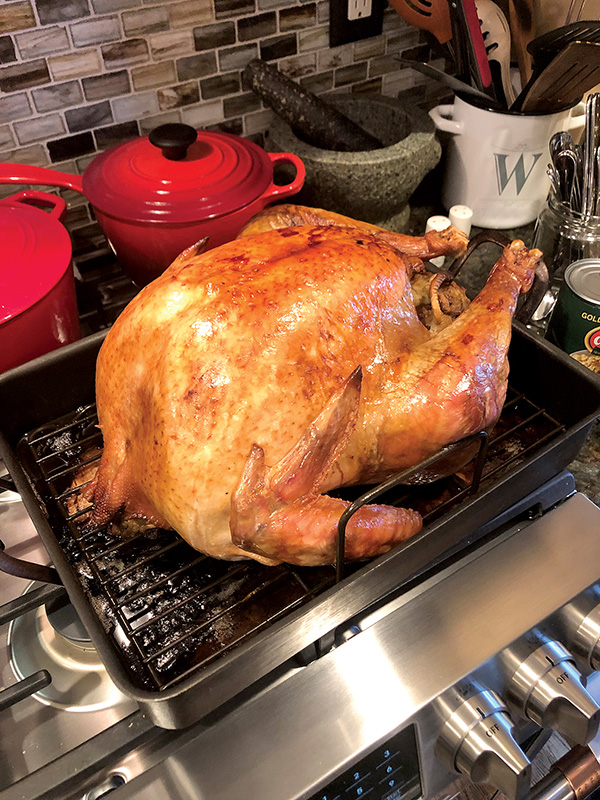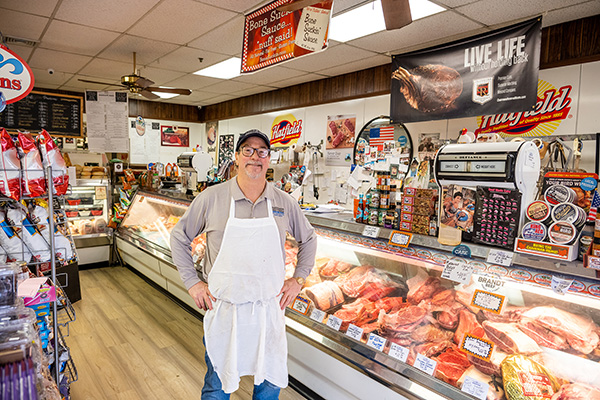
By Vita Duva
If you are looking to get your Thanksgiving holiday started with a fresh turkey this year, you may have to order your bird in advance, but your guests will be sure to thank you. Fresh turkeys are known for their tastiness – over their frozen counterparts, that is.
Frozen turkeys are more readily available than fresh ones and are sure to be applauded by your taste buds if cooked properly, especially if you can find one that is not self-basting, as such birds have been injected with liquid fats and chemicals.
But as the star of the show, a fresh turkey tends to retain more moisture, leaving a long day’s work in the kitchen and your holiday platter bursting with full-bodied flavor.
No matter how you plan to assemble your Thanksgiving table and with whom, the truth of the matter is that the art of turkey cooking can be tricky, and knowing when and where to order fresh can become daunting.
Order Your Thanksgiving
Bird in Advance
You can order a fresh-killed Jaindl Farms or Bell & Evans turkey from Monmouth Meats in Red Bank. The 50-year-old full-service, old-fashioned butcher shop and meat market will take approximately 300 fresh turkey orders this Thanksgiving holiday.
Monmouth Meats is located at 112 Monmouth St. in the heart of downtown, across the street from the Count Basie Center for the Arts.
You can also order a D’Artagnan free-range turkey, Plainville Farms or Fossil Farms all-natural turkey from Sickles Market locations in Red Bank or Little Silver. All sizes are available.
“Right now, I am looking at 130 fresh turkey orders for this holiday season so far,” Sickles Market butcher Kenmar Clagon told The Two River Times. “I would say the Fossil Farms all-natural turkey is our most popular seller this year.”
Sickles Market is located at 200 Monmouth St. in Red Bank and at 1 Harrison Ave. in Little Silver.
You can order a fresh turkey from Pennsylvania’s Amish Country from The Meat House in Shrewsbury. The biggest turkey available from this gourmet butcher and market this year is 20 pounds. You have until the week before Thanksgiving to put your order in.
The Meat House is located at 555 Shrewsbury Ave. in Shrewsbury.
At Dearborn Market in Holmdel, you can order a fresh-killed Bell & Evans turkey for $4.95 per pound. The smallest turkey available at this 90-year-old grocery store is 14-16 pounds, while the largest is 20-22 pounds. A $20 deposit is required at the time of order.
Dearborn Market is located at 2170 Route 35 in Holmdel.

How to Prep and Cook
Your Holiday Bird
“Cooking a turkey is really not a hard thing to do. Just put it in the oven,” said Monmouth Meats owner and self-proclaimed “Head Turkey” Stewart Goldstein. “Nowadays, people successfully cook turkeys all kinds of ways – some people fry them, spatchcock (cut from end to end and flattened) them, or even smoke them in a Big Green Egg.”
Thanksgiving’s traditional stuffed and roasted method, while considered “easy” by masters of the trade, requires a little work and some inside knowledge.
“First, wash and pat your bird dry. Soften some butter and mix together salt, pepper, oregano and garlic. Wipe the bird down with the mixture to coat the skin,” said Keith Reinson, a Colts Neck local who has been cooking turkeys for his family for over 40 years, since the passing of his grandmother Edna Pouch. Pouch, as you might guess, was Reinson’s teacher in the kitchen.
According to the U.S. Department of Agriculture (USDA), shortly before you plan to put the turkey in the oven, prepare your stuffing and stuff the turkey.
Goldstein recommends the Monmouth Meats homemade stuffing or a similar recipe. Although he did not share his recipe in detail, Goldstein did note that ingredients such as fresh bread, breakfast sausage, herbs and seasonings are essential when looking to achieve a flavorful stuffing.
Reinson suggests putting the turkey in a deep roasting pan with a riser to hold the bird up off of the bottom of the pan, wrapping it in aluminum foil and pouring two 16-ounce bottles of beer in the bottom of the pan to keep the bird steaming and moist. Preheat the oven to 375 degrees Fahrenheit.
“Don’t open the oven the whole time you are cooking the bird,” Reinson said, the most important lesson he learned from his grandmother when learning how to cook a turkey as a young boy. “Believe it or not, it means everything. The only time you open the oven door up is to baste the turkey.”
According to Reinson, opening the oven door too often tempers the meat, leaving it to harden and dry out.
When roasting a fresh turkey, consider the fact that the legs and thighs are tougher than the breast meat and take longer to be tenderized by heat. Drumsticks and wings tend to dry out in the oven if they are not properly secured, so properly trussing the bird is also important. Simple instructions for doing this may be found in almost any basic cookbook or online.
“Cook your bird 15 minutes per pound,” Reinson said. “Depending on the bird, that could mean two to three-and-a-half hours of cooking time. A half-hour before the bird is done, remove the aluminum foil.”
As the USDA advises, when your food thermometer registers 165 degrees Fahrenheit in the innermost part of the thigh, the innermost past of the wing, the thickest part of the breast and the center of the stuffing, the turkey is ready.
Remove the stuffing immediately and cover. Let the turkey stand for 15-20 minutes so the juices can settle, then it’s ready to carve.
Once dinner is over, carve the rest of the turkey from the bone and refrigerate it immediately. For safety, make sure the turkey is refrigerated within two hours of coming out of the oven.
To make using those leftovers easy, divide the turkey up into meal-sized portions. Use leftovers within four days or freeze them. If there is gravy left over, you can freeze that, too. Although this future dinner will be safe indefinitely, it will taste best if you eat it within four months.
The article originally appeared in the November 17 – 23, 2022 print edition of The Two River Times.














